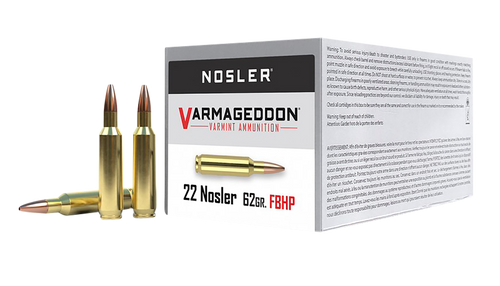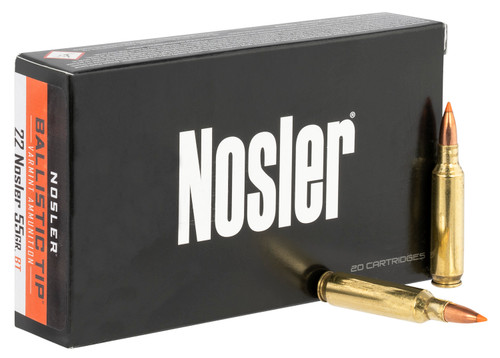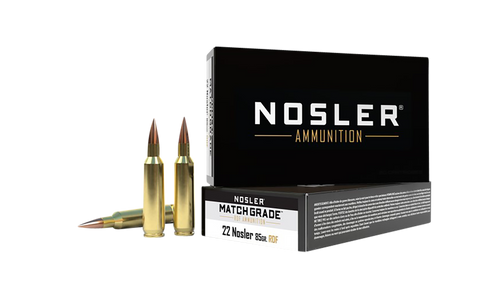Rifle Ammo: In Depth
Rifled gun barrels are more expensive to manufacture than smoothbores. On the other hand, the extra cost and considerable effort to make these barrels–even in the days when rifling was cut by hand–provided a staggering accuracy advantage over non-rifled counterparts. Despite this advantage, it wasn’t until the widespread incorporation of industrial processes into the firearms industry that rifled barrels saw truly common use. Starting in earnest around the mid-19th century, muzzleloading rifles began replacing the smoothbore muskets of old. It wasn’t long before breech-loading single-shot rifles began to replace the improved muzzleloaders. In quick succession, lever-action, bolt-action and semi-auto rifles made their debut within the confines of a generation or two. And, they all needed ammo.
Ammunition was made with comparatively loose tolerances until the 1880s and the advent of smokeless powder. Prior to that time, musket balls smaller than the gun’s bore were patched with pieces of cheap cloth–or whatever was close-at-hand–to make up the difference in diameter. The Minie Ball bullets that wrought havoc on the battlefields of the American Civil War displayed slightly more precision, but still had to be smaller than the bore in order to function during the buildup of black powder fouling.
This problem of precision projectile fit was addressed little-by-little. Breechloading guns and brass-cased ammo helped kick things off, smokeless powder did its part to address barrel fouling, and rifle chambers could be cut with increasing precision on an ever larger scale. By the end of the 19th century, the leapfrogging effects of bullet and powder technology, case design, and firearms action design–one over the other–had finally yielded the modern rifle cartridge.
The brutal European military conflicts of the early 20th century showcased a host of capable rifle cartridges. The French 8x56mmR Lebel, .303 British, German 7.92x57mm Mauser, Russian 7.62x54mmR, and American .30-06 Springfield all saw action on the continent in WWI, for example. In the decades after WWII, the Soviet 7.62x39mm , .308 Win , and .223 Remington would begin to supplant some of more elderly martial cartridges.
At the same time, hunting was becoming more popular than ever before in the US. Ammunition manufacturers like Remington and Winchester attempted to outdo one another with magnum rounds designed to woo hunters in the late 50s and early 60s. Projectile technology continued to improve hunting ammunition’s terminal performance on game.
As the 20th century came to a close, rifle technology–including ammo–seemed to be at an apex. However, a ferocious echo of the early 1900s was soon heard; firearms innovation became necessary again. For the last twenty years, global conflict has spurred the development of new rifle cartridges around the world, especially cartridges that can fit into an AR-15’s action. When coupled with the explosion in interest for long-range target shooting and hunting, these cartridges have reinvigorated interest in the shooting sports and gun ownership in general like little else in the past. If you are a rifle shooter–especially one who lives in the US–this is truly a good time to be alive.
Rifle Ammo: Rifle Choices
We’ve come a long way from the days of crudely formed tubes, handhewn stocks, and powder pans. Modern rifles are mass produced, precision machines, and even the inexpensive ones tend to perform surprisingly well. There are four main action (how ammunition gets fed and cycled through the gun) types you’ll find when rifle shopping, and here are some highlights of each:
Bolt-Action Rifles
- Requires the shooter to advance each cartridge manually using a bolt handle.
- Can have internal magazines or detachable box magazines.
- Best for slow-fire applications like hunting and target shooting, though militaries have used bolt-actions rather successfully in wartime!
- Since you provide the cycling power, bolt actions are extremely reliable.
Semi-Auto Rifles
- Uses gas pressure from a fired round to advance each cartridge automatically after every single trigger pull.
- Most use detachable box magazines, though some (especially hunting rifles) have internal magazines. The M1 Garand uses an en-bloc “clip”.
- Can be used for hunting, target shooting, tactical, and home defense purposes.
- Cheaply built and/or poorly maintained semi-auto rifles may not be very reliable. Modern rifles are pretty forgiving, though.
- AR-15s are semi-auto, contrary to what some folks think.
Lever-Action Rifles
- A lever is used to manually cycle a round, much like a bolt-action (just more Old-Westy).
- Magazines have historically been tubular, and attached to the gun beneath the barrel. Some newer models are fed with detachable box magazines.
- Great for all of your cowboy-related activities!
- Traditionally, lever-gun cartridges are rimmed, and rimmed cartridges aren’t exactly cutting edge technology.
- Lever guns are chambered in handgun cartridges as well.
Single-Shot Rifles
- Single rounds are loaded with fingers, fired, and then ejected through various means one at a time.
- No magazines!
- Dead simple. Also, maybe not the best for home defense!
Rimfire Rifles
- Rimfire ammunition, especially if you’re talking .22LR , can be far cheaper than centerfire ammunition!
- You won’t be able to shoot nearly as far vs. centerfire cartridges, or with as much accuracy, or reliability.
- They’re fun! And, rimfire rifles are a great first gun for a new shooter.
Rifle Ammo: Why Choose a Rifle vs. a Pistol or Shotgun?
Given the modern loads and cartridges we have at hand today, most firearms will easily perform a number of roles. However, if you’re looking for the best tool for the job, that’s another story. For one thing, handguns and shotguns don’t have the range that rifles have. Handguns are also a challenge to shoot well, since you don’t have as much body contact with them, and shotguns (especially 12-gauge ) can kick pretty hard. Also, for the most part, rifle ammo is bottlenecked. This means that it focuses the energy of a powder charge that’s larger in diameter than the projectile. The result: lots of power in a surprisingly small package, especially when you compare it to a shotgun shell.
Hunting
- A rifle enables you to put distance between you and your quarry. This is good from both a safety perspective and a spotting / stalking perspective.
- Rifle projectiles are capable of punching above their relatively light weight since they’re traveling so quickly.
Target / Competition
- As previously mentioned, rifles are far more accurate than pistols, since you are more stable when shooting, and have a longer sight radius (with irons) or a better sighting system (scope).
- Rifles shoot further than pistols and shotguns since there’s more powder in relation to the size of the projectile. Modern rifle cartridges like 6.5 Creedmoor can easily shoot 1,200-yds or more with repeatable results. Just go ahead and try that with a .45 ACP !
Home Defense
- A semi-auto rifle excels in a home defense role. A great example is a carbine-length AR-15, which, with a 16” barrel, is compact enough to maneuver indoors, and doesn’t require you to work a bolt or lever manually. The last twenty-odd years have also seen a flood of AR-compatible cartridges hit the market, so .223 Remington isn’t the only ammo choice anymore.
- While it might not be as easy to handle as a pistol, people don’t tend to shoot pistols very well, especially under stress.
- Most states–albeit with some strings attached–will permit the purchase of short-barreled rifles and sound suppressors, both of which are useful in a home defense context.
Rifle Ammo: Brands and Loadings
Depending on what you need to accomplish, selecting the right ammo can be critical–hunting a large game animal, for instance. On the other hand, it doesn’t matter as much if you’re shooting at steel targets or punching paper at the range. The important thing to remember is that the ammo business isn’t just Federal , Remington, and Winchester. Hornady and Berger both make excellent precision target and hunting rifle ammunition, as do Fiocchi , Sellier and Bellot , Norma , and Sig Sauer . And, while it may have been a point-of-pride to buy American made ammo in the past, many of the foreign ammo firms manufacture their loaded rounds in the US. It’s harder to keep track of which conglomerate owns each particular brand now, too. The point is: find good ammo and stick with it, who cares where it comes from! The following is a quick breakdown of rifle ammo: what goes into a rifle round, and some of the different types of ammo you’ll find in the marketplace.
Popular Rifle Cartridges
- .223 Remington / 5.56 NATO - This is standard ammo for an AR-15 rifle.
- .308 Winchester / 7.62x51mm - Incredibly popular hunting and target shooting round.
- 6.5 Creedmoor - A relatively new cartridge for long-distance shooting and hunting.
- .22LR (Rimfire) - Old as dirt, cheap as hell, and a whole lotta fun!
- 7.62x39mm - Standard food for an AK-47 or SKS rifle.
Centerfire vs. Rimfire
- Centerfire ammunition has a primer set into the middle of the case head. This is the more reliable of the two ignition methods.
- Rimfire ammunition has a priming compound spun throughout the bottom of the case head. It is generally cheaper and less reliable than centerfire ammo.
Caliber vs. Cartridge
- Caliber is a measure of the projectile’s diameter as a % of 1 inch. Therefore, a .30 caliber rifle shoots a projectile that’s a little less than ⅓ of an inch in diameter. For the most part, rifles shoot projectiles between .17 and .50 caliber (or metric equivalents).
- A cartridge is generally a caliber (or metric value) followed by a name or another descriptor: .308 Winchester, 7mm Remington Magnum, .50 BMG, etc.
Jackets and Bullet Material
- To prevent deposits from accumulating in the barrel, lead bullets are covered in copper jackets.
- Depending on the bullet construction, there may be some lead exposed at the tip, or it may be fully jacketed.
Bullet Construction and Bullet Types
- Bonded - Jackets are bonded to the lead core with a heat treating process, so it will expand and stay together inside an animal.
- Cup-and-Core - Jackets cover the core, this is a common construction method for both hunting and target bullets.
- Partition - Designed to expand but retain weight for deeper tissue penetration. Intended for hunting.
- Monolithic - No jacket, usually solid copper. Intended for hunting,
- FMJ (Full Metal Jacket) - Found in bulk target ammo and military surplus ammo. Good on targets but not for hunting.
- HPBT (Hollow Point Boat Tail) - Best for precision target shooting, and hunting, and more expensive than FMJ. The hollow point and boat tail are both features which help with stability in flight.
- Soft Point - Soft point lead bullets are designed for hunting
- Polymer Tip - Polymer tipped ammo is designed for hunting and precision target shooting.
- Copper Solid - Copper solids contain no lead, which is a requirement in some states / circumstances for hunting.
Bullet Weights
- Rifle bullet weight is measured in grains.
- Bullets weigh anywhere from 15.5-gr on the low end (.25 ACP) to 750-gr. or more (.50 BMG).
- Most rifle cartridges have a standard weight bullet or several common weights.
- .223 Remington bulk ammo is typically 55-gr., 62-gr., or 77-gr.
- 7.62x39mm is often 123-gr.
- 6.5 Creedmoor is commonly 120-gr., 130-gr., or 140-gr.
- Different weight bullets for the same cartridge can be used for wildly different purposes. Take 6.5 Creedmoor for example: you can varmint hunt with a 95-gr. V-MAX load in the morning and shoot precision long-range competition with a 153.5-gr. HPBT load later that day.
Velocities
- Nearly all rifle ammunition is supersonic, with .22LR being a notable exception.
- Most centerfirerifle rounds are traveling somewhere between 2,200/fps and 3,000/fps.
Bulk Ammo
- “Bulk” ammo is typically loaded with FMJ projectiles and designed for target shooting or training purposes. Frequently, it’s cheaper, too.
Subsonic Ammo
- Although different factors can also affect the speed of a bullet–such as barrel length–subsonic ammo is designed to shoot projectiles under the speed of sound, which is around 1125/fps.
- Subsonic ammo isn’t as loud as normal pressure ammo. Also, this effect is magnified if you combine it with a sound suppressor on your rifle. Many firearms can be made hearing safe–or close to it– with this combination.
Military Surplus Ammo
- The glory days of surplus, with their pallets and pallets of dirt cheap ammo cans stuffed to the gills with fifty-year-old FMJ loads are long gone. Occasionally, though, this kind of ammo will be available, so if it comes from a trusted source, don’t wait around!
- A generation ago, we were still importing crappy, corrosive ammo into the US from old Soviet stockpiles (especially 7.62x39mm and 7.62x54R). Really old domestic production intended for the US military was also frequently corrosive. Occasionally, corrosive ammo still pops up, but it’s not as common as it used to be. If your surplus was manufactured in this century, it’s probably fine, but it never hurts to double check. The CMP Forum has a procedure you can follow here if you want to check your lot of suspect ammo. If you’re still in doubt, just clean your gun right after you shoot. That’s all that needs to be done!
Steel-Cased Ammo
- Steel-cased ammo is cheaper to produce than brass-cased ammo.
- If your gun cycles it (most quality firearms will), then it’s a great idea to grab a bunch for training or target shooting.
- Depending on the gun, it may not function as well.
- It’s not possible to reload steel-cased ammo with standard reloading equipment.
Rifle Ammo: Frequently Asked Questions
Yes. It’s called an AR-15.
AR-15s are normally chambered in 5.56 NATO, but these days there are tons of other chamberings: .300 AAC Blackout, 6.5 Grendel, 6mm ARC, and .224 Valkyrie to name just a few.
Many states also allow you to hunt game animals with ARs. Most will allow varmint or predator hunting with them as well.
Think about it this way: well made FMJ loads are accurate enough for most nations’ militaries. So, yes, they are accurate.
If you’re shooting competitively, or just really focused on the highest level of precision, maybe look at a HPBT or polymer-tipped load instead.
Steel-cased ammo is great. It doesn’t always run perfectly in every gun, but it’s far from the disaster that it’s sometimes made out to be.
Older imported steel ammo may be corrosive. If this is the case, make sure you clean your gun right after you shoot. You should be doing this anyway!












